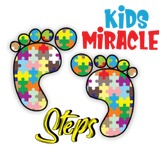When a child recovers from bronchiolitis, they’re just starting their recovery journey. They must regain developmental milestones that bronchiolitis might have delayed. Imagine a solution that combines fun and therapy to boost hand-eye coordination for kids in post-bronchiolitis recovery.
Imagine a place where sensory therapy meets pediatric rehab perfectly. This place tailors its approach to each child’s needs. We’re dedicated to creating this space for every child, using tactile paths as a key tool for development.
The idea of tactile paths brings hope to parents in the post-illness rehab journey. These paths are not just about feeling different textures. They’re designed to help improve your child’s hand-eye coordination through sensation and movement.
Tactile paths help kids unlock their sensory and motor skills. They also fit perfectly into a wide therapy plan that supports recovery. Let’s see how these paths can be a fun part of your child’s day and help them grow.
The Importance of Hand-Eye Coordination in Early Development
Hand-eye coordination is very important in a child’s early growth. It helps build the fine motor skills they need as they grow. These skills develop from moving their hands in different ways. This includes how they move in space, curve, speed up, and how fast they move.
In the early years, hand-eye coordination helps kids interact better with the world around them. This is key to learning how to handle and move objects. It also plays a big role in their mental and physical growth. Watching how kids interact with things can show if they are developing well or need extra help. This is especially true for kids recovering from illnesses like bronchiolitis.
For children with special needs, better hand-eye coordination can really help them in their everyday life. Their development follows a different path, which means they need special help that fits them. This is where things like tactile paths come in. They help with the sensory and motor skills needed for brain development and social skills. Developmental trajectories of these children need carefully designed support.
Research shows that how infants move their hands is very important. It can tell us a lot about their future learning and talking abilities. As they play and discover, they learn to do more complicated things. By about nine months, they can start using signs like pointing.
Overview of Bronchiolitis: Symptoms and After Effects
Bronchiolitis is a major health issue for kids, mainly affecting their lungs. It can start off looking like a cold, with symptoms like a runny nose or cough. But it can get worse, causing breathing problems and the need for respiratory support.
In severe cases, kids might have to go to the hospital to help manage their symptoms. Post-bronchiolitis syndrome is also a big worry. It can lead to ongoing respiratory issues and affect a child’s growth. Kids who’ve had serious bronchiolitis may face more lung problems and developmental delays later.
Bronchiolitis might also have lasting effects on kids. It can risk their brain development, especially if they were born early or had weak immune systems. These kids need careful watch and help to overcome these development hurdles.
As caregivers and doctors, it’s our job to focus on kids’ lung health and prevent illness. We must make sure our hospitals and clinics can give quick and effective care. This way, we can lessen how bad bronchiolitis gets and help our youngest ones stay healthy.
Introduction to Tactile Paths: A Tool for Recovery
Early pediatric health interventions are key to shaping a child’s growth. Tactile paths are gaining recognition as an important recovery tool, especially for children recovering from post-bronchiolitis. These paths use touch to offer a fun, therapeutic experience that helps with development.
Tactile paths improve not just recovery, but overall growth. They combine different textures and materials to trigger various sensory reactions. For kids getting over sickness, this stimulation helps with sensory processing troubles. As they move over these paths, kids feel different textures like soft, rough, cool, and warm surfaces. This variety is designed to enrich their sensory world and support brain development.
Tactile paths are important in therapy for both typical and unique development. They help measure how well a child is doing and can gently help with developmental delays.
Tactile paths provide a safe space for kids to explore and improve their movement and senses. When used in everyday play and therapy, these paths help kids keep growing and getting better. This approach matches up well with known strategies for helping young children.
In the end, tactile paths are a wise choice for helping a child’s development, especially after an illness that affected their sensory and motor abilities. With these paths, we can help children smoothly get back on track with their natural growth.
Designing Tactile Paths for Kids in Post-Bronchiolitis Recovery
For kids getting better from bronchiolitis, it’s key to have sensory-friendly places. This helps their sensorimotor system grow. Pediatric occupational therapy uses things like tactile paths to help. These tools are really important for kids with developmental issues, helping them reach important growth milestones.
Creating effective tactile paths means knowing what each child needs. Each path should help and challenge their moving skills, making their actions smoother. The paths’ texture, stretchiness, and layout are carefully chosen. This way, they give the right sensory input, helping with motor skills and thinking abilities.
| Feature | Description | Benefit |
|---|---|---|
| Smooth Texture | Surfaces designed with minimal friction | Facilitates ease of movement, reducing sensory overload |
| Guided Pathways | Carefully laid out routes encouraging specific movements | Targets and stimulates crucial areas of the sensorimotor system |
| Interactive Elements | Incorporation of elements that react to the child’s touch or actions | Enhances engagement and prolongs focus on therapeutic activities |
Also, it’s important that tactile paths make caregivers part of the process. We make sure these tools not only work well but also let parents and caregivers join in, making a supportive learning space for the child.

Tactile paths blend therapy skills with care, offering a strong way to help in pediatric therapy. They aim to support each kid in their recovery, making sure every step forward helps them face their development challenges.
Incorporating Play: Engaging Activities for Enhanced Coordination
Play therapy is key in helping kids build back their fine motor skills, especially after issues like bronchiolitis. By using interactive play, kids are encouraged to hit their growth targets while they recover. This makes healing more fun and engaging for them.
Tactile paths in play therapy are great for developing motor skills. These paths make healing fun by getting kids to move and think. They help improve coordination and strength, leading to better motor skills and sensory abilities.
| Activity | Skill Targeted | Developmental Milestone Encouraged |
|---|---|---|
| Guided Obstacle Courses | Coordination and balance | Reaching and prehension |
| Patterned Walking Paths | Leg coordination and control | Harmonized movement patterns |
| Interactive Wall Games | Upper limb movement | Fine motor skills and gesture formation |
These crafted activities tap into children’s natural curiosity and energy, making recovery a joyful learning time. It’s not just physical healing; it’s about engaging in enriching play that celebrates every small step. This approach motivates kids and shows parents and caregivers the progress being made.
Case Studies: Success Stories of Tactile Paths in Therapy
We’ve seen amazing rehabilitation success stories with tactile paths in evidence-based therapy. These paths show great tactile path outcomes and sensory play benefits. They help kids recover from post-bronchiolitis and improve in many ways. Tactile paths are more than fun. They build crucial motor skills and help senses work together better.
Let’s look at how these tools have changed therapy and helped kids:
| Case Study | Age | Diagnosis | Therapy Duration | Outcome |
|---|---|---|---|---|
| Case 1 | 3 years | Post-Bronchiolitis | 6 months | Improved hand-eye coordination, better balance |
| Case 2 | 4 years | Motor Delays | 1 year | Enhanced fine motor skills, increased confidence |
| Case 3 | 3.5 years | Sensory Processing Disorder | 8 months | Greater sensory integration, improved social interaction |
| Case 4 | 5 years | Developmental Delay | 1 year | Noticeable improvement in communicative gestures, better overall mobility |
These cases show how tactile paths can build key developmental skills. They also show how sensory play benefits therapy. Through real stories, we see the clear good from therapeutic innovation.
Every story underlines how new therapy tools can make a big difference. As we learn and improve these methods, we’ll find better ways to help. This means more amazing stories of healing in kid’s therapy ahead.
Integrating Tactile Paths into Daily Routines
Adding tactile paths into children’s daily routines makes therapy simpler. It also brings important sensory integration into everyday life. Therapy at home is key. It lets kids do therapeutic activities in a place they know well. This encourages them to use tactile paths more often.
By focusing on care that involves the whole family, everyone learns how to fit these paths into the child’s day. This doesn’t just cut down on the need for outside therapy. It also helps keep therapy consistent, which is crucial for the child’s recovery and growth.
To include tactile paths in everyday life, follow these steps:
- Put tactile paths in areas where your child spends a lot of time, like their room or play space.
- Get your child to walk on the paths during daily activities, such as playtime or small walks at home.
- Turn using the paths into a fun game to keep their interest. You can create challenges or offer rewards for using them.
- Get brothers and sisters to join in. This turns it into a group activity and helps with social skills and family bonding.
Using tactile paths in this way makes therapy part of daily life. It also matches sensory experiences with what the child likes and needs. This all-inclusive method makes therapy and sensory activities normal at home. It leads to big improvements in the child’s brain development and social abilities.
Expert Opinions: Therapists’ Insights on Tactile Paths
Occupational therapists believe tactile paths are crucial for children recovering from bronchiolitis. They use their pediatric therapy insights and professional expertise to recommend sensory activities. These activities help children develop better.
They link clinical sensory rehabilitation practices with early childhood development. Using tactile paths in therapy focuses on each child’s specific needs and growth goals. This method makes sure kids get the most benefit from every session, tailored to them and their environment.
- Custom designs for tactile paths considering the child’s specific stage of development and environmental conditions.
- Inclusion of families in the therapeutic process, enhancing the support system for the child while educating parents on crucial developmental insights.
Therapists also stress the importance of including families in therapy. This approach builds a supportive atmosphere. It helps parents understand their child’s development better.

In summary, experienced therapists value tactile paths highly for pediatric recovery. These tools are more than physical aids. They create a supportive space for children to grow in all areas of development.
Parental Guidance: Supporting Your Child Through Recovery
When your child is recovering from bronchiolitis, parental support in therapy is crucial. You can make a big difference by following home therapy guidance. Our center believes that caregiver involvement greatly improves your child’s progress. We provide tools like tactile paths for both clinic and home use, which substantially boost developmental support for children.
Tactile paths help with recovery and boost hand-eye coordination. They let parents play a big part in their child’s healing. We teach you to watch your child closely. This means you can act fast to help with any problems, cutting down on things like long hospital stays.
Our main goal is to empower parents. We use well-known programs like NIDCAP that show how important families are in care. As parents, you are key to your child’s best brain development results.
Creating a plan that meets your child’s unique needs is key. We invite you to share your insights on your child’s likes and dislikes. This helps us to better understand your child than we can in the clinic alone. By valuing caregiver involvement, we all work together for a better recovery journey.
Joining hands with parents makes a big difference. We teach you how to turn everyday moments into chances to help your child heal. This teamwork helps your child and brings your family closer, creating a healing space.
Resources and Tools for Creating Your Own Tactile Path
Crafting a DIY tactile path can deeply support your child’s journey after bronchiolitis. These activities focus on enhancing hand-eye coordination and sensory processing in a fun way. By using a variety of sensory tools and activity kits, you can tailor the experience to your child’s unique needs.
We have found a selection of resources for you. They include custom designs and various sensory play items, adaptable for any child. You can create a simple path in your home or something more elaborate for therapy. This makes recovery engaging and full of possibilities.
- DIY tactile paths: Customize paths with everyday items like foam and non-slip mats. You can adapt them as your child grows.
- Sensory tool resources: Essential for any path, these range from textured tiles to smooth rollers, aiding in recovery.
- Therapeutic activity kits: Pre-packed with various materials, these kits focus on specific developmental goals.
- Custom tactile path designs: Tailored to your child’s needs and therapeutic goals for a personal recovery experience.
Using these resources daily has therapeutic benefits and makes recovery enjoyable. Engaging sensory play materials can greatly improve session effectiveness.
It’s important to keep at it, slowly moving from easy designs to more complex ones. This approach boosts motor skills and confidence. With creativity and the right kits, your custom path will enhance your child’s play and growth every day.
Kids in Post-Bronchiolitis Recovery: Identifying Needs and Tailoring Interventions
When helping kids after they recover from bronchiolitis, it’s key to use a detailed, personalized care strategy. It’s important to understand each child’s unique needs. This way, we can make therapy plans that really fit them. Our approach blends breathing therapy, motion studies, and help for brain development.
We put a lot of work into breathing therapy as part of healing. This helps with any remaining lung problems, improving health. It also prepares kids for more active therapy. Kinematic assessments let us closely look at their movement skills, especially how they use their hands and eyes together. Knowing these details helps us fine-tune our therapy to make recovery smoother and more effective.
For kids with special needs, changing our therapy plans is really important. We might adjust the tools we use or the place where we do therapy. This helps make therapy better and more helpful. For instance, creating paths with different textures and colors can improve their sensory processing and movement skills. It makes learning fun and supportive.
Below is an outline of common interventions we adapt for different capabilities:
| Requirement | Therapeutic Intervention | Expected Outcome |
|---|---|---|
| Enhanced Respiratory Function | Targeted Respiratory Exercises | Improved Breathing, Stamina |
| Poor Fine Motor Skills | Customized Kinematic Activities | Enhanced Dexterity and Coordination |
| Sensory Processing Issues | Adapted Sensory Tools | Better Sensory Integration |
We make sure everything we do is in your child’s best interest. We update therapy plans to match your child’s growth. Our team is all about creating a caring space. We want to meet their medical needs and make their recovery happy and engaging.
Conclusion
In this article, we’ve looked at how vital hand-eye coordination is for kids recovering from bronchiolitis. Tactile paths do more than help; they’re bridges for kids to get back their physical strength. Each step forward is a big jump in bringing back a child’s ability to move and find joy.
The value of tactile paths is known in science and felt in homes. Talking about family empowerment means giving families the tools and confidence they need. The heart of Kids Miracle Steps is our promise to support and educate families. We make sure no family feels alone after bronchiolitis.
To finish, unity’s power is key—caregivers, doctors, and communities make tactile paths work better, giving kids confidence to step forward. Our goal is to help families face their challenges, celebrating every bit of progress. As we keep up this support network, our shared dedication will light the way forward. This means a brighter tomorrow for kids and their families.






